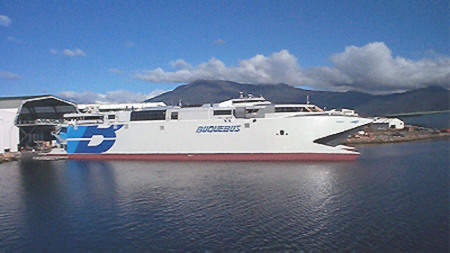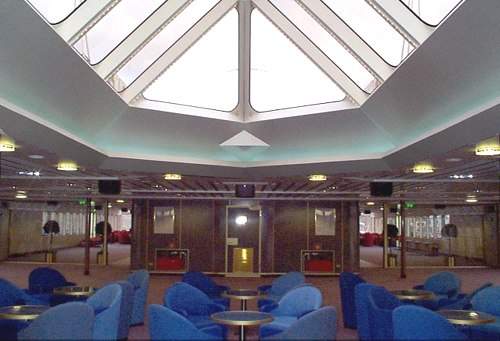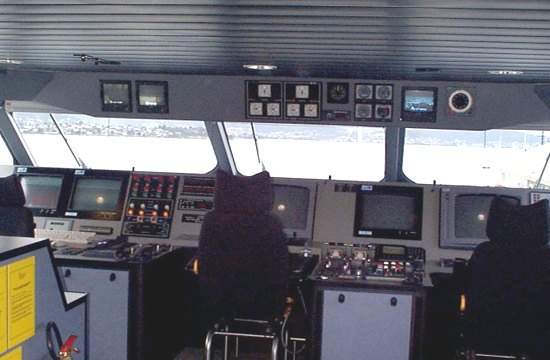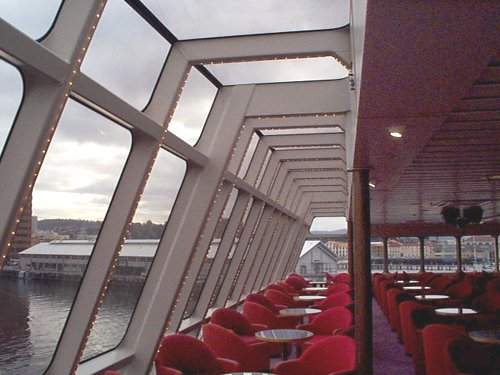Avemar is the first Evolution 10 series wavepiercing catamaran to be built by Incat’s Tasmanian yard in Hobart.
The vessel was delivered in July 1999 to Buquebus Espana. Although her design has been developed from the two 96m-long wavepiercers in service with Fred Olsen and Fast Cat Ferries, Avemar is more than just a reconfigured version with an extended superstructure, hence the adoption of a new designation by Incat.
Buquebus introduced the vessel to its 120 nautical mile route between Barcelona in Spain and Palma de Mallorca in the Balearics. Scheduled crossing time is 3 hours 30 min.
Design
Each hull is divided into eight compartments and connected by a watertight bridging structure. The main structure is constructed using 5383 H321 or H116 aluminium alloy and 6062-T6 and 5083 H112 extrusions. The superstructure on Avemar extends along virtually the entire length of the vessel.
All passenger areas are located on a single level, reached via two entrances midships and two aft, port and starboard. The vessel has a first-class saloon stretching from the bow to two midships shops, and tourist class elsewhere.
The combination of vehicle decks and moveable mezzanine decks gives 300 lane metres, measuring 2.7m wide by 4.3m high. Vehicle access is via shore-based stern ramps, with at least four lanes. The vessel can take 230 cars or 95 cars and 12 trailers with 24 TEU or 95 cars and 24 trailers with 48 TEU.
Facilities
Foot passengers board the vessel amidships via aerial walkways, or aft via stairs. Access from the vehicle decks to the passenger deck is via two sets of stairs forward and another pair located midships port and starboard.
The interior of the passenger deck was designed by Julio Cesar Ortega, who has combined brown, red and blue fabrics, beige walls, bronze and woodgrain panelling and stainless steel handrails. First class and tourist class passengers have their own cafeterias, salad bars and toilets.
The tourist area is based on tub seats and tables forward with rows of seats around a central services block. More tub seats and tables are available in a lounge, featuring full-depth panoramic windows across the stern.
The centrum foyer has a central skylight, with concealed fluorescent lighting around its base, and full depth windows port and starboard that extend into recesses above the deck to maximise light. Noise levels do not exceed 70dBA in the passenger areas and 65dBA in the wheelhouse.
Propulsion
Four Caterpillar 3618 engines rated at 7,200kW at 1,030rpm drive Lips 150/3 D waterjets via Reintjes VLJ 6831 gearboxes. A Lipstronic waterjet control system and autopilot is interfaced with the engine management and ride control systems to ensure that reverse thrust is coordinated with a reduction in engine speed and lifting of the trim tabs.
Incat is marketing the Evolution 10 design with Ruston 20RK270 diesels and a gas turbine version, powered by twin General Electric LM 2500 engines rated at 18MW and four waterjets.
A full Maritime Dynamics ride control system featuring forward T-foils and aft trim tabs is fitted. The vessel reached 47k during trials.
Automation and control
Avemar has a relatively small wheelhouse with seating for captain, first officer and chief engineer across the main console. The vessel has small docking booths, projecting 1.5m port and starboard from the superstructure in the area of the first class lounge.
Equipment on the bridge includes Litton radars interfaced to an Anschutz gyrocompass, C Plath magnetic compass and one of two Litton LMX 400 gps sets and an ISIS 2500 integrated alarm and assessment system from Litton Marine Systems.









